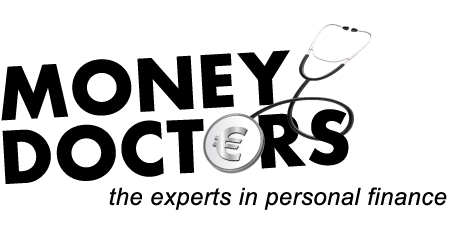John Lowe the Money Doctor gets to grips with your finances and in this Part 2, analyses your spending and examines your options.
By now, you should have mapped out your spending on a monthly or weekly basis. You should then look at your fixed outgoings to see if there are cheaper alternatives. Electricity, gas, telephone / broadband and cable television are items that should immediately come to mind but there could also be substantial savings to be achieved by shopping around for cheaper car and household insurances and reviewing your life and health insurances. For example, interest rates both for loan and savings products constantly change and what might have been the highest rate for your savings last year could very well be the lowest this year. Most deposit takers regularly launch a new savings product – high interest, attractive and after a couple of months slowly drop the rate hoping the vast majority of initial subscribers will not notice and allow their apathy to rule, leaving the investment in this product. One deposit taker in 2014 had 41 different deposit accounts advertised on its web site
- 23 of them were not available to NEW depositors
- Of the 23 existing ( and so neglected ) accounts, 18 attracted 1% or less
- 14 attracted 0.35% or less
- 9 of them attracted 0.1%
I can confirm these “customers” were NOT written to and offered better rates by this deposit taker and I would further confirm that virtually ALL the deposit takers operate in the same manner. Check and recheck your interest rates. Albert Einstein stated Compounding is mankind’s greatest invention as it allows the reliable systematic accumulation of wealth – leaving your money in these kind of accounts will only compound your problem !Now have a look at your net monthly income and see how it matches up to your outgoings. Remember also that while you would normally reckon on budgeting on a monthly basis, some of your bills such as electricity or gas are payable 2 monthly or quarterly. However both of these utilities run budget plans which allow you to make monthly payments which are reviewed regularly based on metered usage.All of these steps may achieve some savings but essentially they merely consist of a tidying up of your finances and something you should do every year, in good times or bad. That is why you need to spend c. two hours EVERY month on your finances.An area where savings can be achieved is in the field of discretionary spending but this requires discipline. Consider this! You go to the A T M on Friday afternoon and withdraw, say, € 80. Monday morning check your pocket to see how much, if any, remains. How much of this spending can you account for, or has it just fallen through a hole in your pocket ? This is where the diary or the FREE Money Doctor APP for your smart phone (from itunes or Playstore) will help. Find out what you are spending. Then you will know whether it was frivolous and unnecessary. You may have more important things to do with your money. Prioritise as the amount of casual and probably valueless spending can be frightening.I once worked with a newly married couple who had recently bought a house and earned relatively modest salaries. They had their spending mapped out to such an extent that they operated a daily budget and anything more than the cost of a daily newspaper required a council of war. However, they lived comfortably within their means and managed a very good holiday each year.
KNOW YOUR POSITION
By now you will know your position and whether meeting your monthly commitments is causing or is likely to cause you problems. You should be totally honest with yourself because the early acceptance of difficulties can be crucial. Remember also that life can also throw up mini financial crises on a regular basis so factor some unexpected outgoings into your calculations. Your mortgage repayments are likely to be your biggest commitment but in terms of interest rate they are also the cheapest. If you are fortunate enough to have a Tracker Mortgage (tracked to the European Central Bank – ECB – rate, currently 0.5%), do not be tempted to switch to any other product. Trackers are like gold dust and lenders are using all sorts of means to switch you from them. Looking for an extension to your interest only facility only gives them leverage to discuss that switch. Pay the full capital and interest repayment if needs must. If however you are on a Standard Variable Rate Mortgage, some of these vary from lender to lender. Check where your rate is comparatively and certainly if on the high side, you should first of all consider a Fixed Rate with your existing lender if you are looking for security in your repayments. If you are not offered an attractive rate, you could shop around if you qualify
EXAMINE YOUR OPTIONS
Mortgages
- Less than 80% loan to value ( so no negative equity switches )
- Have sufficient earning to justify such a switch ( generally as a rule of thumb now c. 3.5 times your annual income for BOTH applicants )
- Most lenders will approve a mortgage up to age 65, with a few up to age 70 – this has to be borne in mind if switching.
- You have a good credit history – no missed payments or judgments
Personal loans
You may also have car loans, furniture or home improvement loans or overdrafts. The Sniper Approach, as described in Chapter 9 Getting out of debt, should be adopted. This is where you pay off the most expensive debt first… if you can. Some of these personal loans can attract interest rates over 16%. The greater the risk, the higher the interest rate.
Overdrafts – a bank mechanism for giving you money upfront, a loan, on the promise of an eventual lodgment to the account to regularise the account but charging you through the nose for it – can also be misleading and lure you in a false sense of security. Firstly, they are hugely expensive – personal overdraft interest rates start at c.13%. Secondly the set up charges, referral fees, unpaid fees, surcharges ( an additional amount of interest – could be 1% per month – chargeable if you exceed the overdraft limit without permission ) are simply not worth it. Managing without an overdraft is the ideal. Remember also the requirement for overdrafts is that they must be in credit for 30 days each year.
Credit cards
So you have “maxed out” your credit card/s, where you have used the full credit limits in your cards. What are your options ? Paying 3% of the balance each month effectively will create a 20 year loan for you based on the high credit card interest rates. If your credit rating is good enough however ( Irish Credit Bureau in Newstead, Clonskeagh Dublin 14 track all loans, record missed payments – the record stays there for 5 years, judgments – the record stays there for life. Call them at Dublin 2600 388 for details of your credit rating) and you are still in satisfactory employment, then you could switch to one of the 3 credit card companies that offer 0% interest on transferring you balance over to them for a period of time. For example, your debt is € 1,200. Transfer over the debt, stop using the card, pay off €200 a month for 6 months at the end of which you have a debt free credit card. For those who have not paid off their balance, the interest rate applicable after 6 months is a whopping 18% +. It will pay to pay off.
Overdrafts and credit cards are by far the most expensive borrowing so it makes no sense to use these to bridge the gap between income and expenditure.
In the concluding Part 3, we look at establishing priorities and defining your financial end game. Nearly there….

